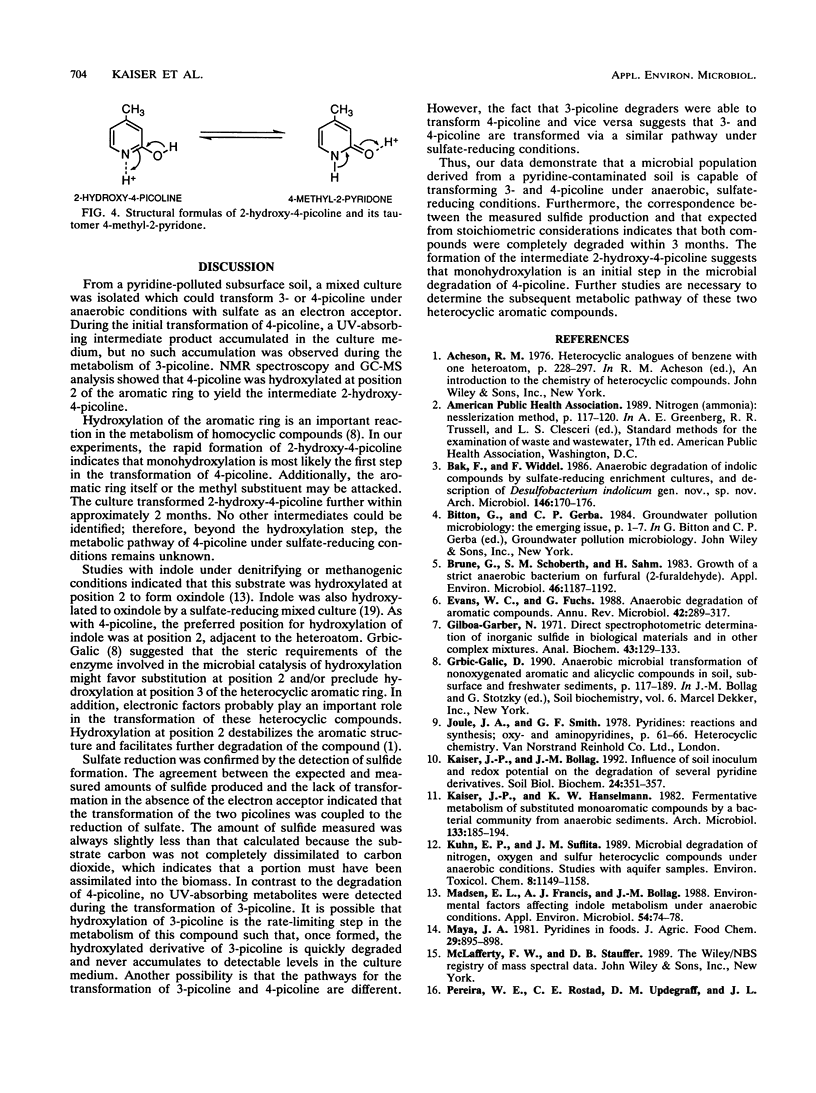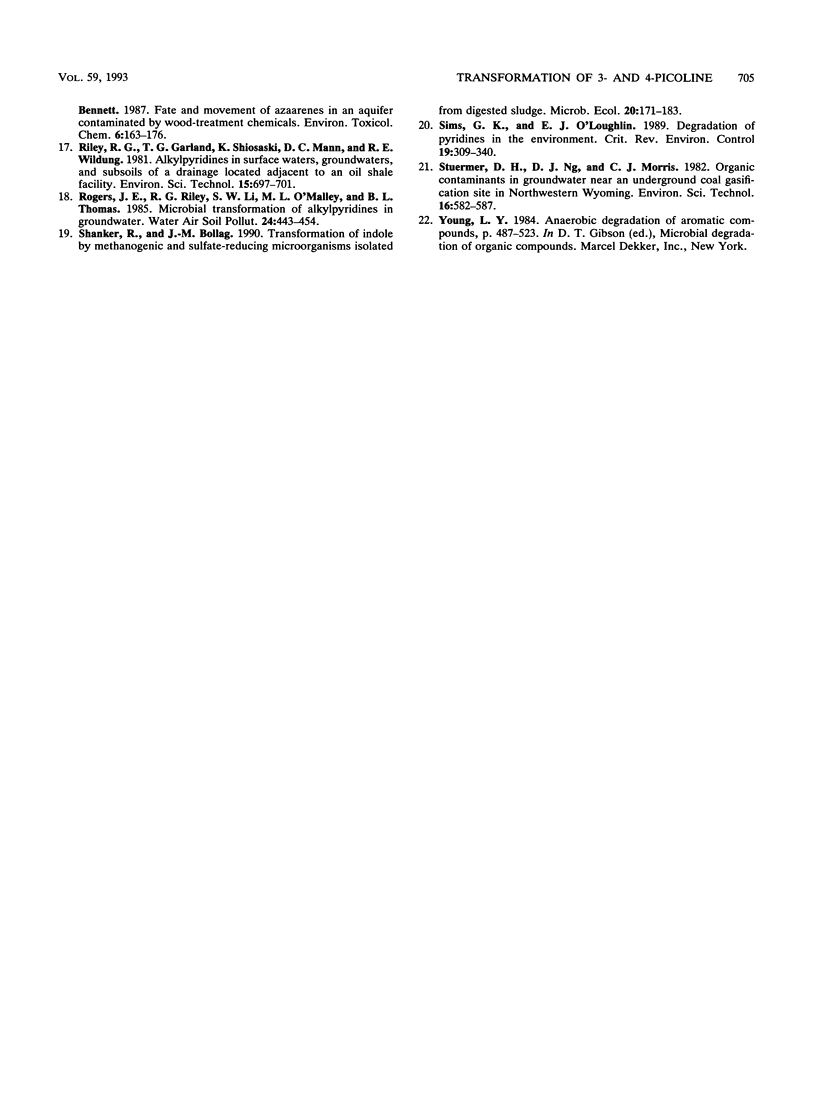Abstract
A microbial population which transformed 3- and 4-picoline under sulfate-reducing conditions was isolated from a subsurface soil which had been previously exposed to different N-substituted aromatic compounds for several years. In the presence of sulfate, the microbial culture transformed 3- and 4-picoline (0.4 mM) within 30 days. From the amounts of ammonia released and of sulfide that were determined during the transformation of 3-picoline, it can be concluded that the parent compound was mineralized to carbon dioxide and ammonia. During the transformation of 4-picoline, a UV-absorbing intermediate accumulated in the culture medium. This metabolite was identified as 2-hydroxy-4-picoline by gas chromatography-mass spectrometry and nuclear magnetic resonance analysis, and its further transformation was detected only after an additional month of incubation. The small amount of sulfide produced during the oxidation of 4-picoline and the generation of the hydroxylated metabolite indicated that the initial step in the metabolic pathway of 4-picoline was a monohydroxylation at position 2 of the heterocyclic aromatic ring. The 3- and 4-picoline-degrading cultures could also transform benzoic acid; however, the other methylated pyridine derivatives, 2-picoline, dimethyl-pyridines, and trimethylpyridines, were not degraded.
Full text
PDF




Selected References
These references are in PubMed. This may not be the complete list of references from this article.
- Brune G., Schoberth S. M., Sahm H. Growth of a strictly anaerobic bacterium on furfural (2-furaldehyde). Appl Environ Microbiol. 1983 Nov;46(5):1187–1192. doi: 10.1128/aem.46.5.1187-1192.1983. [DOI] [PMC free article] [PubMed] [Google Scholar]
- Evans W. C., Fuchs G. Anaerobic degradation of aromatic compounds. Annu Rev Microbiol. 1988;42:289–317. doi: 10.1146/annurev.mi.42.100188.001445. [DOI] [PubMed] [Google Scholar]
- Gilboa-Garber N. Direct spectrophotometric determination of inorganic sulfide in biological materials and in other complex mixtures. Anal Biochem. 1971 Sep;43(1):129–133. doi: 10.1016/0003-2697(71)90116-3. [DOI] [PubMed] [Google Scholar]
- Madsen E. L., Francis A. J., Bollag J. M. Environmental factors affecting indole metabolism under anaerobic conditions. Appl Environ Microbiol. 1988 Jan;54(1):74–78. doi: 10.1128/aem.54.1.74-78.1988. [DOI] [PMC free article] [PubMed] [Google Scholar]


